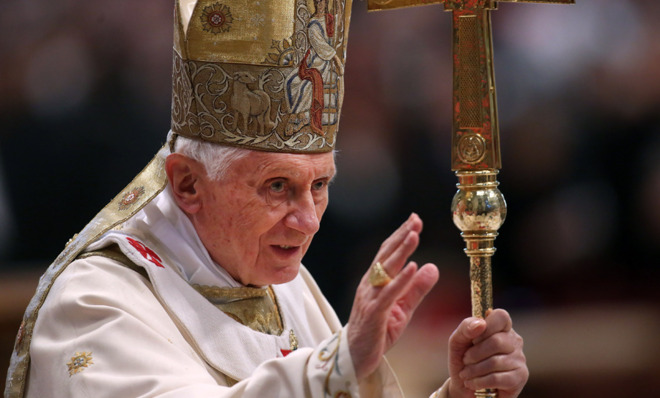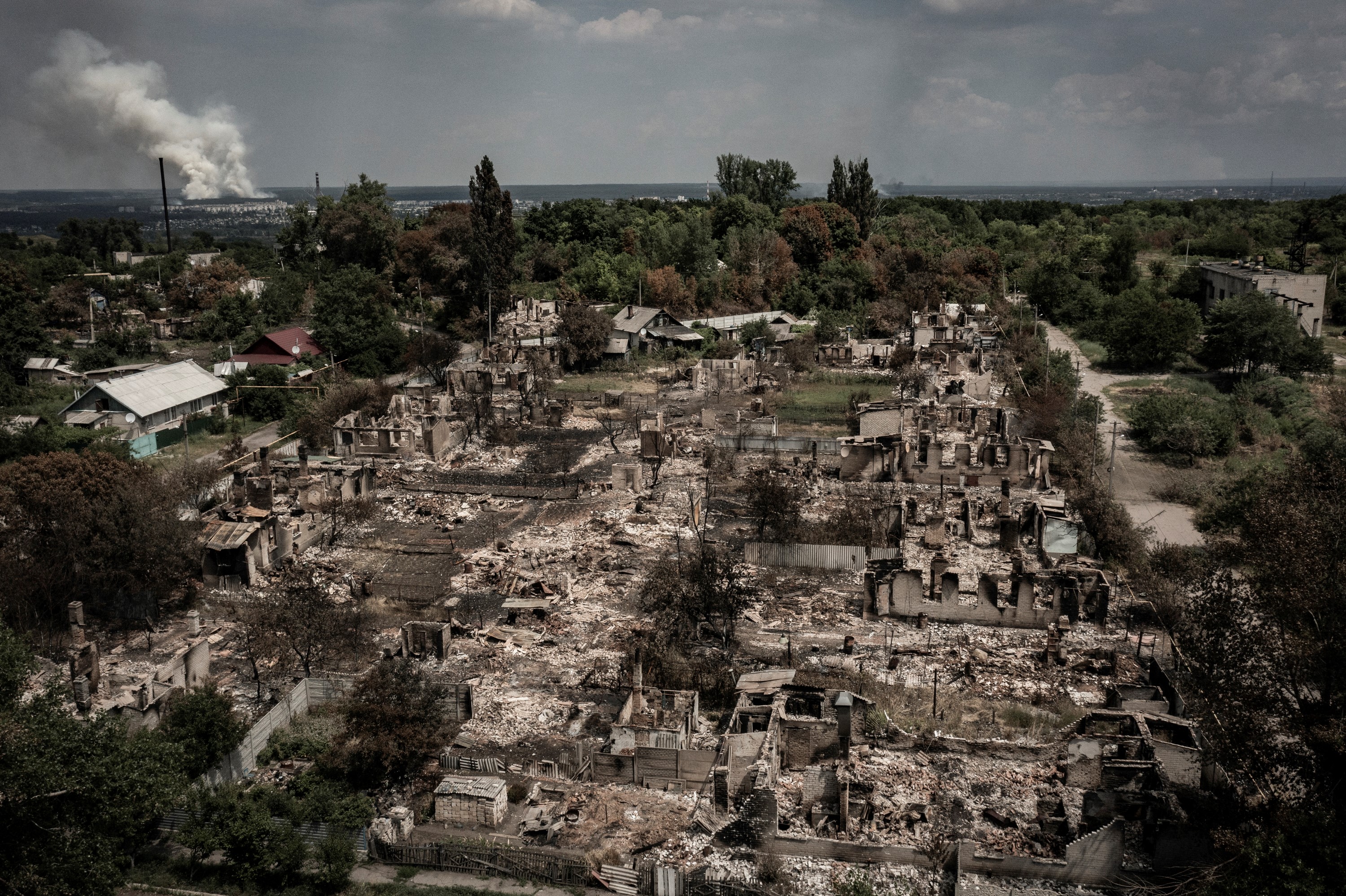In defense of Pope Benedict and the Latin Mass
One of Benedict's greatest legacies was to liberate the Latin Mass — and thereby restore beauty to the whole world


Twelve summers ago I entered a dusty little church in a Polish neighborhood in Poughkeepsie, N.Y., that Poles had abandoned long ago. It was a 45-minute drive from my home. The old, wooden high altar and the sanctuary it sat in had not been renovated, marked as they were by New York state as too historically important to endure the trendy changes of church architecture in the 1960s, ’70s, and ’80s. The people there were a crusty lot, hardened by years of struggle between their own bishops and priests. Some were made saintly by this. Others were conspiracists, and grouchy. A few seemed to be all of the above. I watched the women, young and old, adjust mantillas on their heads, and pray sotto voce. I marveled at the pious silence of the children. A few amateurs intoned the Gregorian chants for that day, as a priest quietly and efficiently offered the old Latin Mass.
Seven years ago this week, Pope Benedict would deliver the relief of my life. He declared that what we did in those days was legal. He affirmed what we told ourselves as we were chased out of that parish, that this form of worship had never been abolished and never ought to be. On the very portentous date of July 7, 2007, he issued the document Summorum Pontificum, which liberated that Mass. By doing so he established his legacy as a brave pope. He also did a great service for culture and the arts, for the whole world — even for nonbelievers.
Why does it matter to nonbelievers? Because beauty matters to everyone. In 1971, Agatha Christie, not a Catholic, was so appalled at the disappearance of the traditional Mass and the effect this would have on English culture that she signed a petition to Pope Paul VI to keep it alive in England. It read, in part:
The Week
Escape your echo chamber. Get the facts behind the news, plus analysis from multiple perspectives.

Sign up for The Week's Free Newsletters
From our morning news briefing to a weekly Good News Newsletter, get the best of The Week delivered directly to your inbox.
From our morning news briefing to a weekly Good News Newsletter, get the best of The Week delivered directly to your inbox.
The rite in question, in its magnificent Latin text, has also inspired a host of priceless achievements in the arts — not only mystical works, but works by poets, philosophers, musicians, architects, painters and sculptors in all countries and epochs. Thus, it belongs to universal culture as well as to churchmen and formal Christians. [Traditio]
Because of Benedict's intervention, my own parish in Norwalk, Conn., is treated not only to Gregorian chant, but to Renaissance-era motets, and Masses composed by Morales and Monteverdi. It is an aesthetic high crime that so much of the modern church continues to force saccharine and theologically insipid hymns like "Here I am, Lord" on its people, while leaving William Byrd's Ave Verum Corpus in a dusty attic.
Summorum came too late to save that community in Poughkeepsie. In the New York Archdiocese as then ruled by Cardinal Edward Egan, the offense of saying this Mass and publishing tracts in its favor was treated as a far more serious crime and scandal than clerical pederasty. Cardinal Egan suspended my Poughkeepsie priest, and effectively exiled him from the life of the church. Priests who knew about the situation observed darkly that if he had raped children instead of saying this Mass, his career would have been better off.
The modus operandi then was that these Latin Mass people — "the crazies," as they were called in the archbishop's office — should be contained in Saint Agnes in midtown Manhattan or in a few obscure parishes along the Hudson River. Egan was all too happy to see that Poughkeepsie parish closed and the building sold. He smudged us out like a penciled mistake.
Benedict's intervention urged bishops to make every accommodation for communities like ours. He grounded this in a solid principle of religion, writing: "What was sacred for prior generations, remains sacred and great for us as well, and cannot be suddenly prohibited altogether or even judged harmful."
A free daily email with the biggest news stories of the day – and the best features from TheWeek.com
The growth of this movement within the church has been phenomenal. In 1988, there were 20 regularly scheduled and diocesan-approved Latin Masses in the United States. After Summorum Pontificum, there are now more than 500. And because the movement to restore beauty and solemnity to worship is growing, it is also becoming more mainstream and diverse, less "crusty" and forbidding as it seemed to me over a decade ago.
Benedict's intervention was not perfect. His intellectual attempt to save the Council and the new Mass from criticism with a "hermeneutic of continuity" was a noble failure. If the council intended continuity, why did it throw every aspect of Catholic worship up for possible revision in its documents? Why was the council swiftly followed by the worst spasm of iconoclasm in the history of the church — a tearing down of altars, images, statues — and a hasty revision to nearly every part of Catholic life?
A first-year student of religious studies would recognize that changing a religion's central act of worship — altering the rationales for it, modifying all its physical and verbal aspects — is not merely an "update" or sign of organic growth and maturation, but a mixture of vandalism and revolution. Even today, as more young and growing families attach themselves to the ancient rite, rearguard apologists for the 1960s insist on a 1930s critique that the old Mass cannot speak to modern man. But that is another, sadder essay.
Luckily, the maligned and misunderstood Pope Benedict made this generous gesture to embattled Latin Massers seven years ago. It has empowered a movement in the church that will bring back beauty not only to the sanctuary, but to the whole world as well.
Michael Brendan Dougherty is senior correspondent at TheWeek.com. He is the founder and editor of The Slurve, a newsletter about baseball. His work has appeared in The New York Times Magazine, ESPN Magazine, Slate and The American Conservative.
-
 US citizens are carrying passports amid ICE fears
US citizens are carrying passports amid ICE fearsThe Explainer ‘You do what you have to do to avoid problems,’ one person told The Guardian
-
 All roads to Ukraine-Russia peace run through Donetsk
All roads to Ukraine-Russia peace run through DonetskIN THE SPOTLIGHT Volodymyr Zelenskyy is floating a major concession on one of the thorniest issues in the complex negotiations between Ukraine and Russia
-
 Why is Trump killing off clean energy?
Why is Trump killing off clean energy?Today's Big Question The president halts offshore wind farm construction
